What’s the oldest house in Dayton? As with many questions like this, the answer is “it depends.”
It turns that out we need to add some qualifications to our question in order to arrive at an answer.
The first thing we need to ask is whether the house needs to remain at its original location.
Newcom Tavern
If our answer to that first question is “no,” then Newcom Tavern (the early log cabin, not the bar in the Oregon District) gets the honor.
It was constructed in 1796 and served several important purposes including Dayton’s first school, church, jail, and general store.
It was moved from its original location on Water (today’s Monument) and Main Streets to Van Cleve Park (at the edge of today’s Riverscape Metropark).
Later the old cabin was moved again to its current location in Carillon Park.*
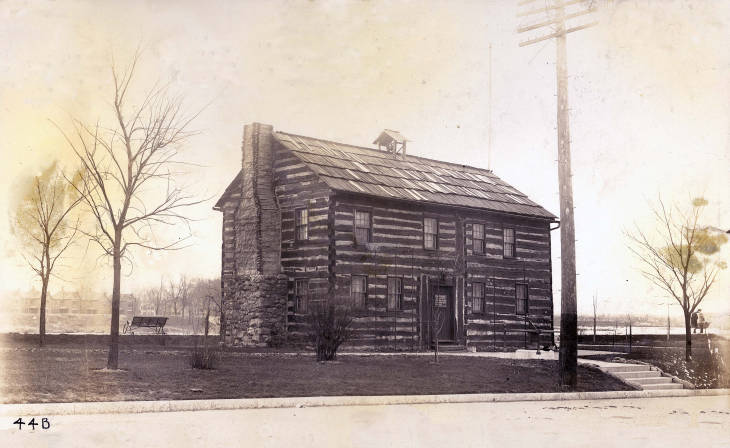
Lewis Kemp House, Daniel Miller House, Thomas Clegg House, and More
But let’s say we’re talking houses at their original location.
We next have to decide if we’re talking about what would have been a “city house” at the time of its construction.
If not, and we’re merely going by any house within today’s Dayton city limits, then we have a couple of early farmhouses, including the 1806 Lewis Kemp House on Burkhardt Road.
Lewis Kemp was a prominent citizen and an active member of the United Brethren Church in Dayton, and he constructed the house on his farm with brick and limestone on a stone foundation.
Today this house is extremely close to the Riverside boundary, but it is indeed in Dayton.
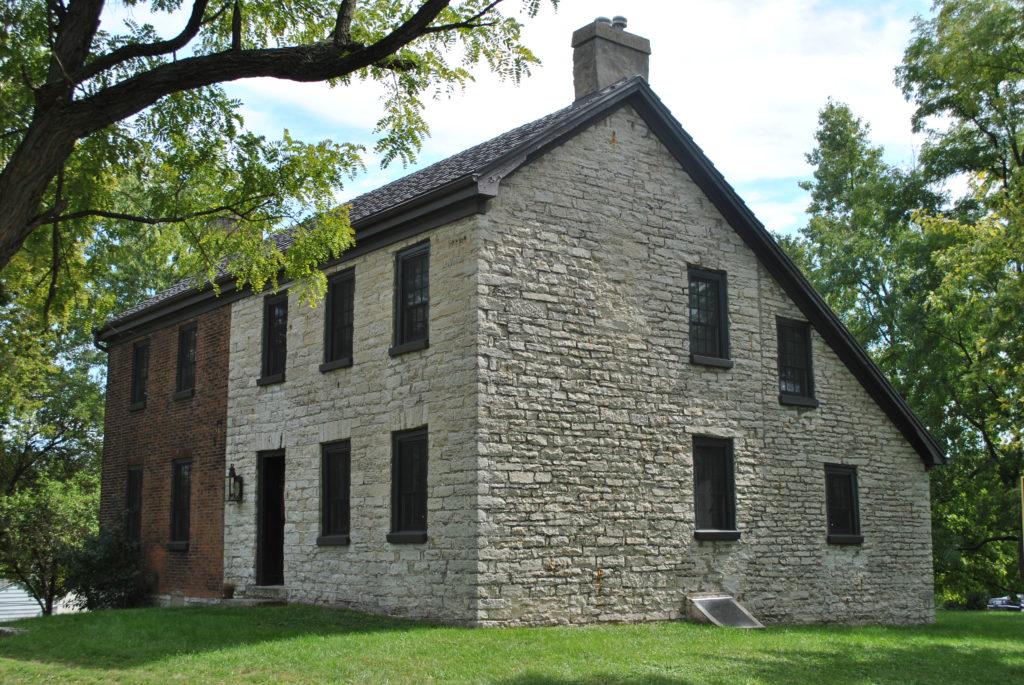
But there’s another contender that at least one source has claimed to be older: the farmhouse at 3525 Dandridge Avenue overlooking Wolf Creek built on land owned by Daniel Miller.
It’s often listed as c. 1808 but has also been said to date to 1802. So now you can see another difficulty when asking these types of questions: conflicting sources and limited definitive information when dealing with the early 1800s.
It’s worth noting that the Kemp House has widely been recognized as the earliest, including being added to the National Register of Historic Places in 1975.
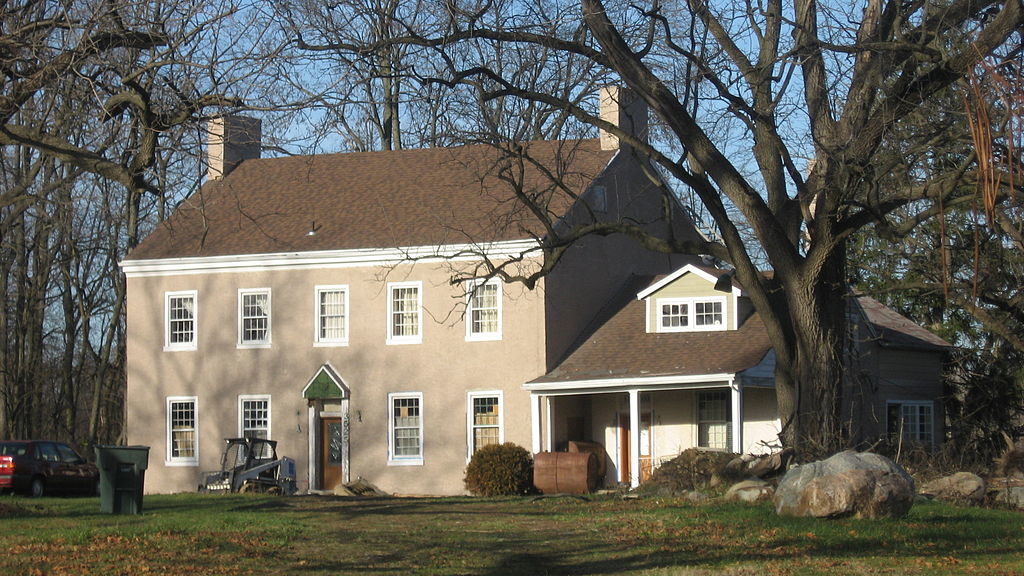
But let’s say we are talking about “city” houses. There are a couple in downtown Dayton that vie for the title.
Some sources give the nod to the 1829 house at 120 N St. Clair St.
The structure has an interesting history, having been owned at one time by the abolitionist Samuel Brady, and later housing the William Clingman Transfer Company, an early delivery service for the Dayton Daily News.
Another candidate is the Thomas Clegg House (also called the James Brooks House), whose construction date is usually given as 1831 or 1832, although other sources say 1827 or 1828.
There’s some uncertainty as to what was actually the original house, and one of the rear portions was possibly constructed first as a freestanding house.
It was then altered later in the 1800s.
(In the Streetview below, move over to St. Clair St. to see the distinct structures and additions with a red exterior.) So as you can see, depending on what exactly we mean when we say “Dayton house,” our answer will vary.
And even then, conflicting sources leave some uncertainty as to which was truly the earliest.
** Just to make sure we have some “lost” in this article, a building that housed “Seattle East,” said to be older than the Clegg House and 120 N. St. Clair, was demolished in 2006 for Avis rental car.
*** And in closing, if we decide expand to the Dayton metro area, we get at least one house possibly tied with the Kemp house: the 1806 two-story stone Asahel Wright House at 26 N. Main St. in Centerville.
Asahel Wright was a great-uncle to Orville and Wilbur, and the house is today a museum.
There’s also the house at 281 W. Whipp Road in Washington Township.
John Ewing purchased the land in 1796 and built the house “shortly thereafter.”
It is a rare example in the area with a braced frame and corner post construction.
*Edited for clarity 2/28/2019
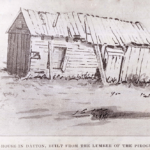
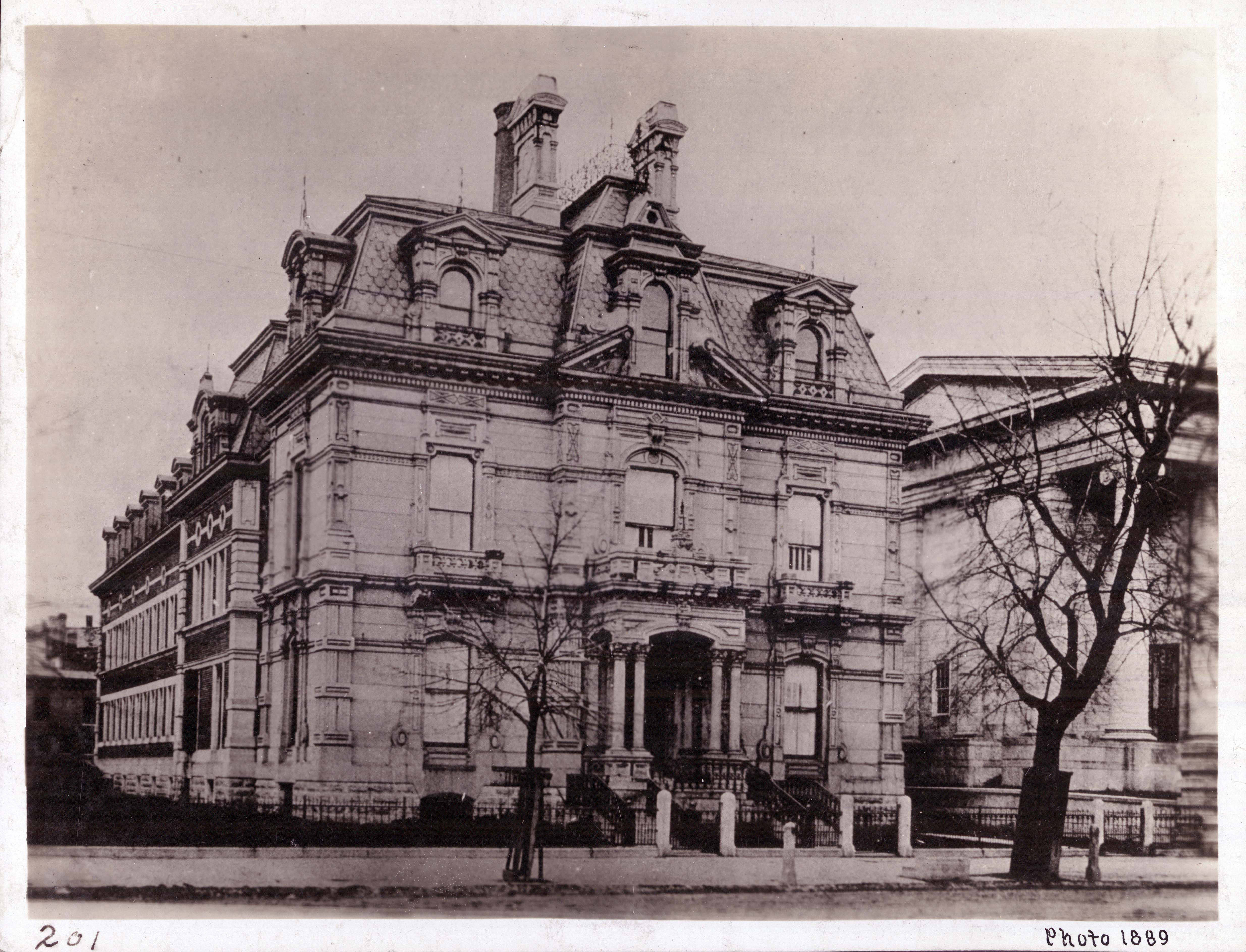
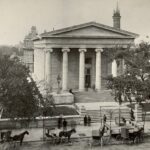

My coworker lives in the Clegg house. Really beautiful, classic home.
Awesome! It definitely is a great one. Sad to think how few buildings from that era survive downtown.
Tell him/her to contact me at mandmparanormalinvestigations@gmail.com and my team will investigate the hone for free
This neoclassical house just barely in Riverside at the corner of Bonnieview and Wicker was built 1795-96 and does not appear to have any recognition for its age. Owned at one time by the late Jack Steele ( one of the last directors of the Dayton State Hospital) had very little changes to the original old house, but has a large addition on the back. It sits on a hill overlooking a few acres that include large pond and it is almost hidden in a neighborhood of modest brick homes of the 1950s. I looked at it in about 2013 when the Steele family was selling it after his passing.
https://www.google.com/maps/@39.7630179,-84.1256969,3a,75y,354.14h,82.17t/data=!3m6!1e1!3m4!1sDtxcmdTraMqShlc1du_i4Q!2e0!7i13312!8i6656
I went to school with the two Steele kids and we were always told that there was quicksand on the property. I think this was in order to keep kids from fishing in the pond. It now has been painted pink. The pond property was up for sale sometime ago. The back of the house use to be all glass and bats would come out of the attic in the evening and we would throw foil at them and they would dive at it. Memory Lane!
This house on Cosler, also in Riverside, Is a very early house built in a style similar to old German style houses. The lower lever was, a still clearly remains, space for livestock as a barn with living quarters for human above. Crawling around the attic I could about 5 years ago I could see it was clearly late 18th century or very early 19th construction. As of that time little change was made to the old structure as the walls were to thick to add any modern amenities. The original fireplace was still intact. It sits on a couple acres in the middle of a post WWII housing development.not far from the Kemp House.
https://www.google.com/maps/@39.756162,-84.1268687,3a,75y,95.04h,79.61t/data=!3m6!1e1!3m4!1sTyoGGWVnsBRqezm87iy90Q!2e0!7i13312!8i6656
Thanks so much for sharing these additional early houses! I was not aware of them, and their lack of recognition certainly is curious. I wonder if their being outside the current city of Dayton limits is a factor at all.
The one on Cosler is in the city of Dayton. I have always wondered about the one on Burkhardt near the water tower. I have always wanted to stop and look at it. I cannot find it mentioned in any book but it is very old and unusual. I believe the last time I saw it, it was painted a loud pink and it has pointed roofs. Does anyone know anything about this one?
Newcom Tavern in reality has been moved TWICE, not once as you indicate in your article about the oldest buildings in Dayton.
The house originally consisted of two rooms: one upstairs and one downstairs, and was located at what became the southwest corner of Main and Water (later Monument) Streets, where “it stood there for almost a century.”[1] The size of the cabin was doubled two years after it was built and it served as Dayton’s first school, first church, courthouse, council chamber and store. It was best known as a crossroads tavern in the Northwest Territory for all wagon men and drovers.[1]
In 1894 when architect Charles Insco Williams “tried to raze it to make way for an apartment building,” the logs beneath the clapboards were found to be those of the old Newcom Tavern.[1] In 1896 the Centennial Celebration Committee helped move the structure to Van Cleve Park on Monument Avenue and the Daughters of the American Revolution raised money to restore it. In 1896 it was opened as a public museum and held relics donated by Daytonians.[1] The Tavern was moved once again in 1965 when it was relocated to Carillon Historical Park and became part of the Settlement Exhibit. The lower level of the tavern is open to the public, but the upper level is no longer open
This is how it is currently descibed on Wikipedia. They reference Newcom Tavern Touring Ohio. Retrieved August 02, 2012. But the same information is available from the Dayton Public Library, Dayton Daily News Archives, History Dayton, etc.
I suggest you correct this entry. Both the original and second locations of this house were on Water Street (no issues there) but if you didn’t want to go into two moves, then you should have said something like from a lot on Water St. (now Monument Ave.) near the original location of the house.
In reality, it shows how important this building is. It was moved twice! Not many homes, even historic ones, are moved more than once, so I think you might note this in your article too, or maek a new article about how important and how loved the building became, and while lost to progress over the years, how the stripping off of the clapboard siding, it was found again. The remineds me of places like the Price Brothers building that was covered up to to make things more modern. It also shows what can happen when a building is covered up for years and years and the oldtimers who would have known about the building’s historic past all are gone and nobody cares for years and the exact location of a building is no longer known.
It is like the cornerstone to the Capital Building in Washington DC. We all know where it is at, what portion was built first, etc., but nobody now can find the original cornerstone placed by George Washington. Many assume it was either removed when an additon was added or in now hidden inside subsequent foundation building. If it has been removed, nobody knows where it is at today, and researchers have been looking into this matter for decades.
You are correct, and I do recount some of the history of both moves in my book.
For this post I didn’t intend to go into a complete history of Newcom Tavern, but rather to simply list a few different candidates for “oldest house” depending on how we define it. I’ll make an edit for clarify, however.
Your point about two moves signifying a structure of great importance is a good one, and the story certainly does deserve being told. I just didn’t plan to do that here. It’s a good idea for a future article, and I appreciate your sharing of the additional details and thoughts.
Actually, upon further inspection I did mention both moves, albeit not in a very good way: “It was moved from its original location on Water … to Van Cleve Park (at the edge of today’s Riverscape Metropark). Today the old cabin resides in Carillon Park.” (Meaning it was moved there a second time from the edge of what’s now Riverscape to Carillon.) But I’ll fix that language to make it clearer.
When I was younger, my mother and grandmother took me to see Newcom Tavern and I was told that one of my cousins was born in that house. I am a genealogist and I still cannot find who on my mother’s side was born there. Still looking. Great story and would love to read your book. My husband and I love to visit old houses and take pictures of them along our travels. We restore cemeteries, too.
Do one on the old Harshman House in Riverside.